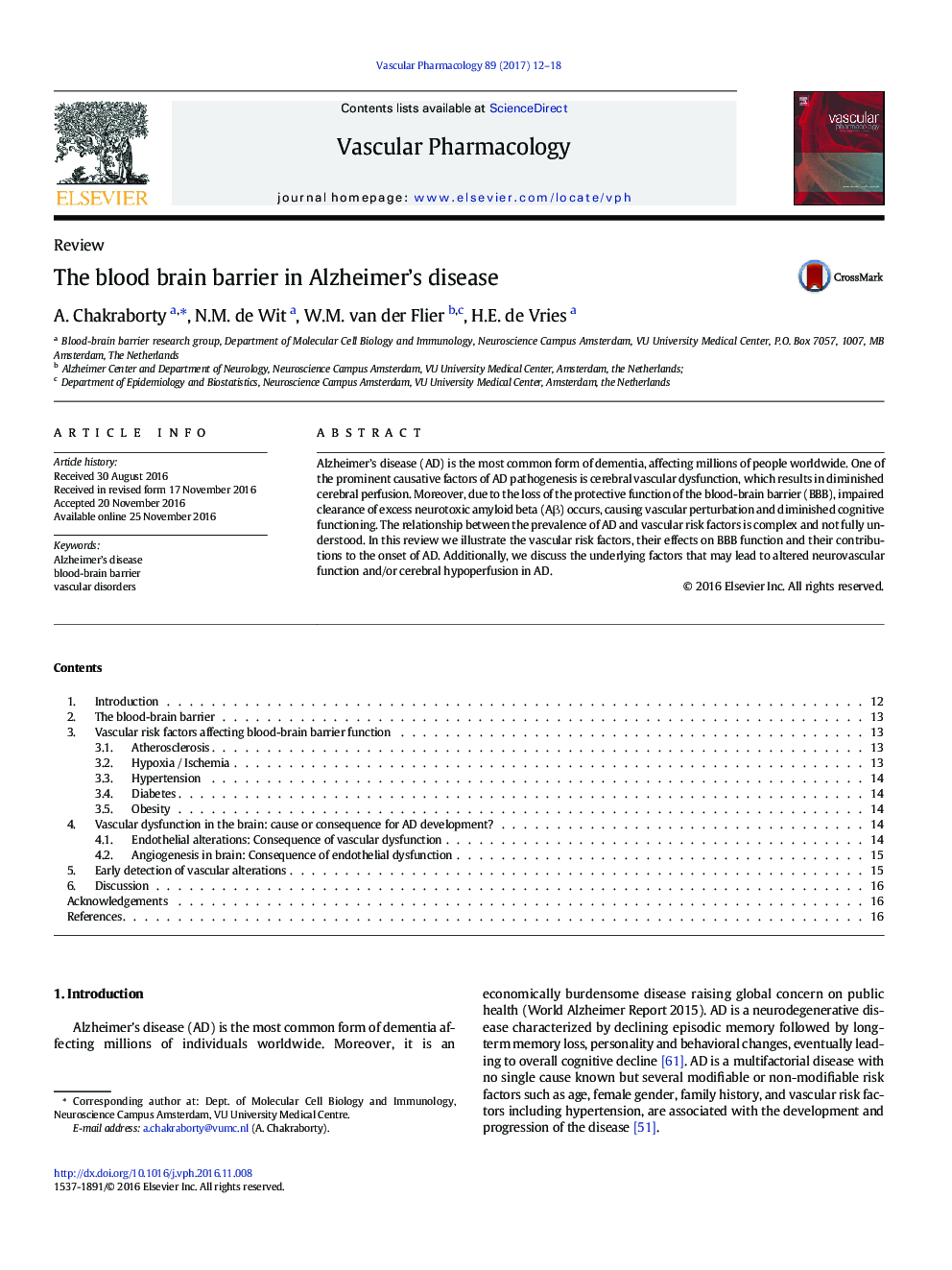| Article ID | Journal | Published Year | Pages | File Type |
|---|---|---|---|---|
| 5558939 | Vascular Pharmacology | 2017 | 7 Pages |
Alzheimer's disease (AD) is the most common form of dementia, affecting millions of people worldwide. One of the prominent causative factors of AD pathogenesis is cerebral vascular dysfunction, which results in diminished cerebral perfusion. Moreover, due to the loss of the protective function of the blood-brain barrier (BBB), impaired clearance of excess neurotoxic amyloid beta (Aβ) occurs, causing vascular perturbation and diminished cognitive functioning. The relationship between the prevalence of AD and vascular risk factors is complex and not fully understood. In this review we illustrate the vascular risk factors, their effects on BBB function and their contributions to the onset of AD. Additionally, we discuss the underlying factors that may lead to altered neurovascular function and/or cerebral hypoperfusion in AD.
Graphical abstractDownload high-res image (208KB)Download full-size image
